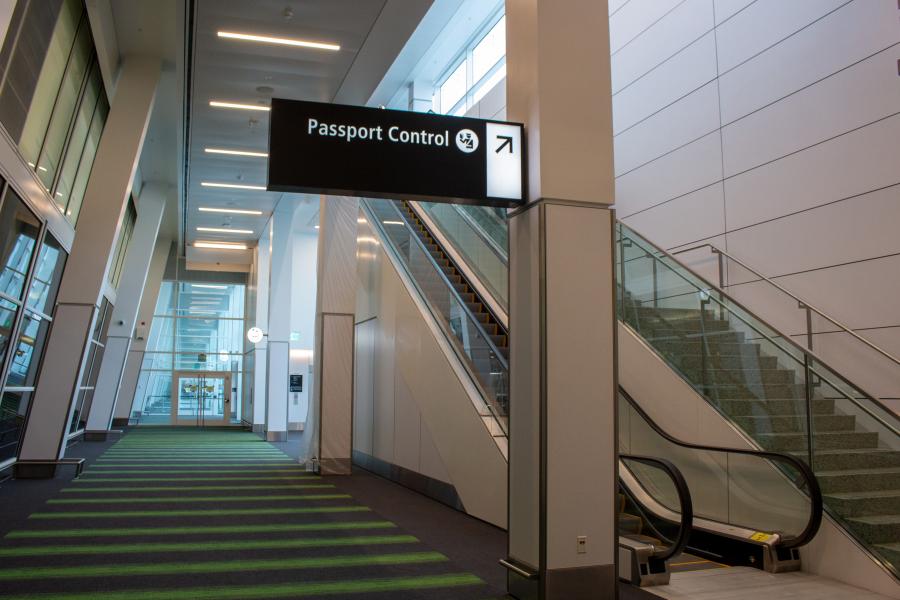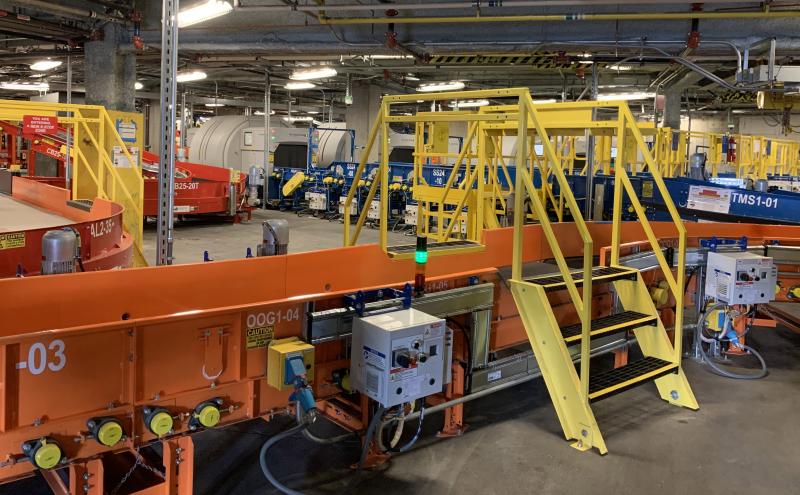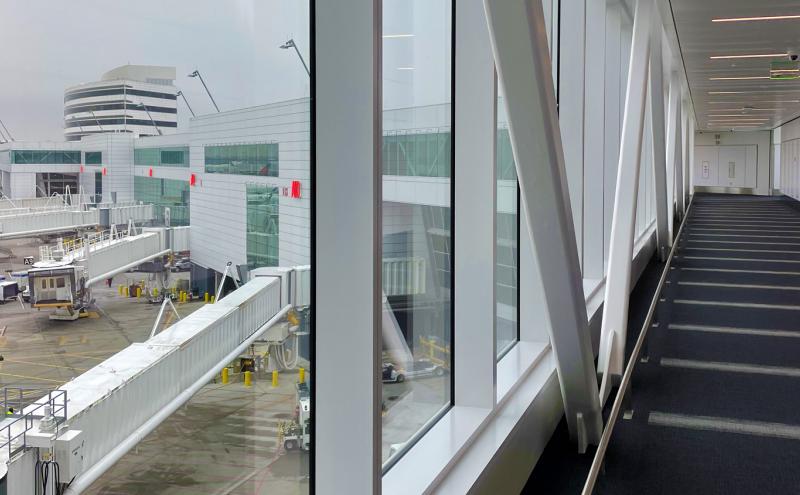
Updated March 2022
The International Arrivals Facility (IAF) is the most complex capital development program in the 71-year history of Seattle-Tacoma International Airport (SEA). When it’s open in spring 2022, the facility will give travelers arriving from international destinations more space, a quicker entry process, and a more awesome experience.
One important element is the International Corridor, a secure and window-lined walkway running along the top of Concourse A that will get international arrivals to the processing area securely and with a view of the airfield. The innovative design of the new International Corridor within the IAF allows us to upgrade eight existing gates to handle arriving wide-body international aircraft without constructing new gates. After opening, SEA will be able to operate up to 20 international-capable gates to support future growth in the region.
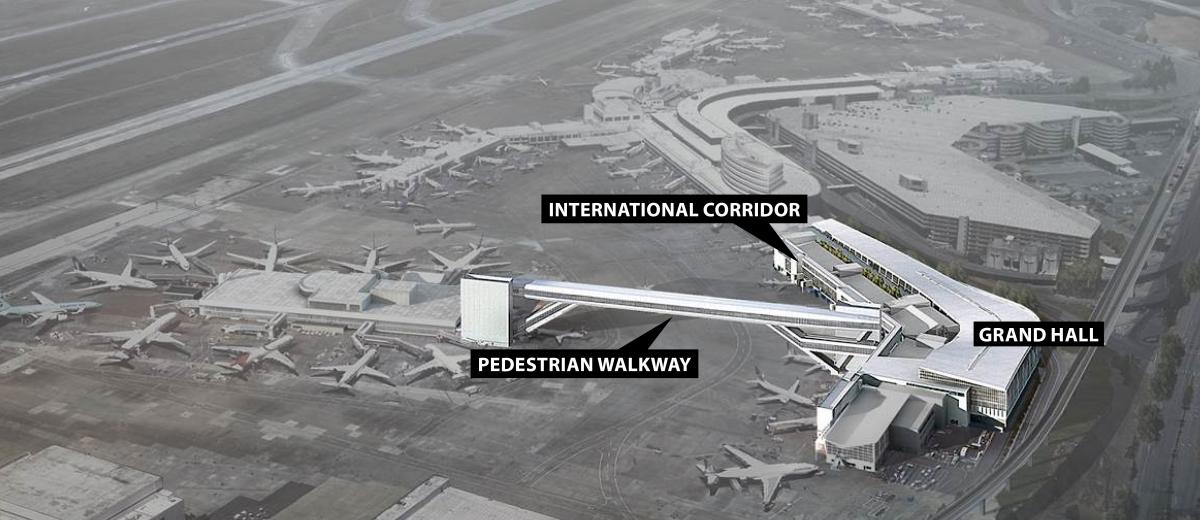
Here are a few facts about what’s coming soon:
1. The International Corridor will decrease wait times for arriving flights
When an international flight arrives, all passengers must be screened for entry by U.S. Customs and Border Protection. At SEA, all arriving international flights currently deplane at the South Satellite (SSAT) and are processed through Customs before making their way to baggage claim. During peak periods, aircraft and passengers could wait up to two hours for a gate.
SEA Airport wants to provide excellent service and that wait time wasn’t good enough for us, so we developed solutions to create more international-capable gates. One challenge was to figure out how to move international travelers securely to the new Grand Hall where Customs will be located.
Located along the west side of Concourse A, the International Corridor will allow eight existing gates to be used for international arrivals and reduce congestion at the SSAT.
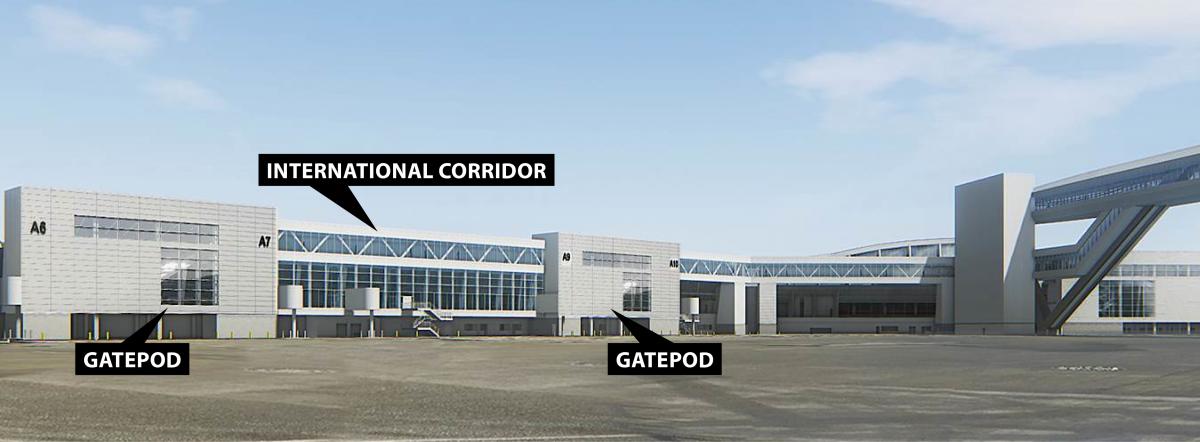
2. The International Corridor is a scenic and secure route to the Grand Hall
With the International Corridor, international arrivals are separated from domestic arrivals at Concourse A and passengers progress through a light-filled corridor with views of the airfield. International passengers arriving at A gates will head up a set of escalators, stairs, or elevators to the International Corridor. This elevated corridor has walls of windows, supports one-way directional travel, and leads passengers directly to the Grand Hall.
Watch the video below to see a demonstration of the passenger journey.
3. Swing gates nearly double international arrivals capacity
With the International Corridor located above Concourse A, we needed to upgrade eight existing domestic gates into swing gates. While most airport gates can handle either a domestic flight or an international flight, swing gates can handle both. Swing gates maximize capacity by accommodating domestic flights between international arrivals at the same available gates and more arriving passengers without the costs of building new gates.
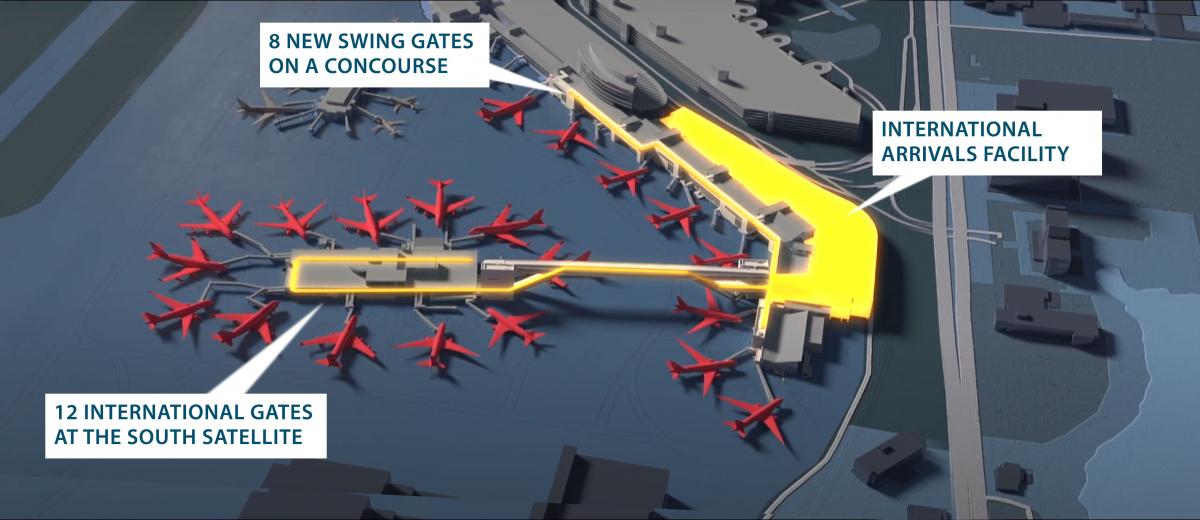
4. New doors go with the passenger flow
Another interesting feature of the Concourse A renovation is flexible doors that can accommodate the flow of both domestic and international arrivals. ‘Gatepods’ house the new swing gate systems and gate doors that control the flow of arriving passengers to the proper destination. The new system will route domestic passengers to Concourse A and international passengers one level up to the International Corridor.
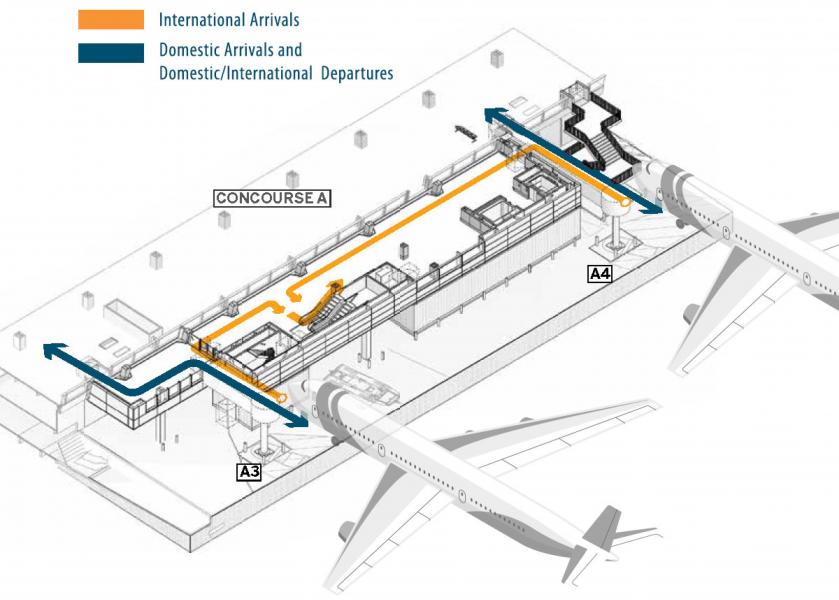
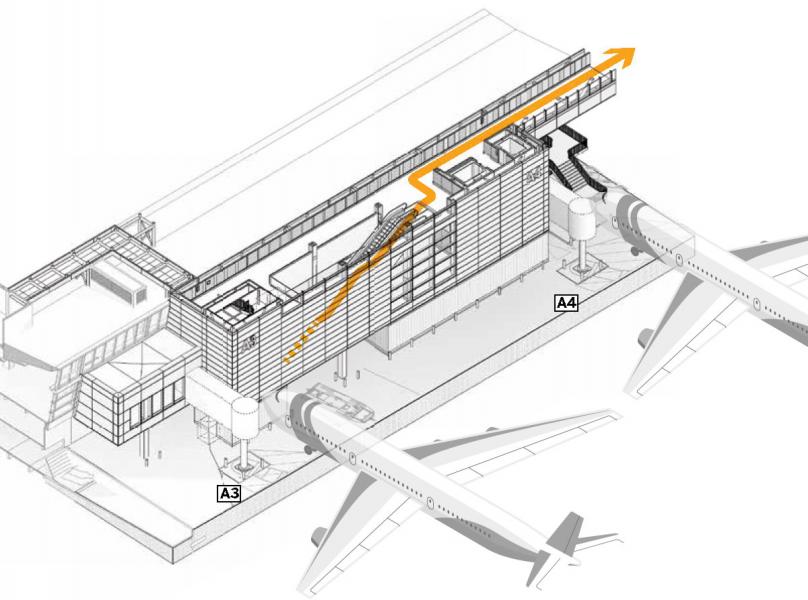
5. Even escalators take a nap to conserve energy
Each gatepod houses a staircase, escalator, and elevator to transport arriving international travelers up to the International Corridor. When they’re not in use, the energy-efficient escalator motors take a nap to save even more energy. This and other energy-saving features like LED lighting support the IAF’s goal of Leadership in Energy and Environmental Design (LEED) V4 Silver certification.
